Mold and mildew presence in a home poses serious concerns because they are identified as substances that can trigger allergies. These allergens are capable of provoking strong allergic responses and could also contribute to respiratory problems. Should mold and mildew start developing in your carpeting, discoloration may become apparent. In severe cases, the extent of the damage might be so significant that replacing your carpet becomes the only viable option.
The good news is that getting rid of mold and mildew from a carpet is easy. In fact, it is possible to get rid of the stains and the musty smells that they cause by using a few homemade solutions. Here are the steps that you should take if you want to save yourself from the negative effects of mold and mildew.
What we cover
ToggleStep 1: Preparation
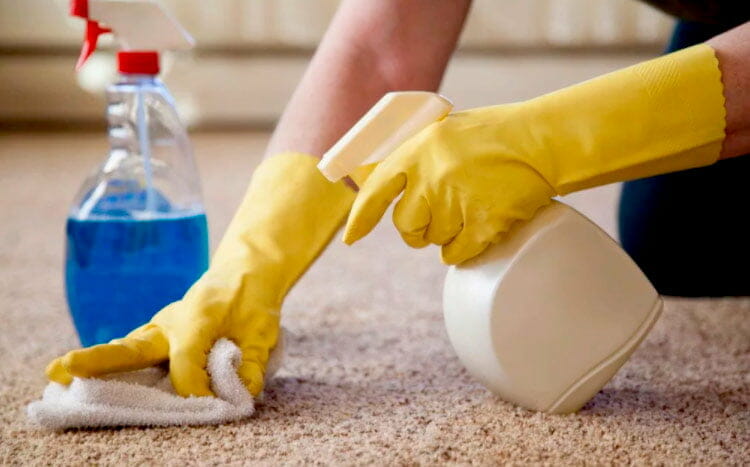
The first step is to gather all the supplies you need. This involves making sure that you have enough baking soda, vinegar, and water to create an effective cleaning solution. It also involves gathering the tools that are needed to get the job done. This includes a good brush, a clean rag, a vacuum with a HEPA filter, a dustpan, and a trash bag. And although not necessary, getting your hands on a fan and a humidifier will make your life a little bit easier.
Step 2: Protect yourself
With your supplies gathered, you should then take steps to keep yourself from inhaling or spreading mold and mildew spores. Wearing a pair of rubber gloves, putting on a face mask, and shielding your eyes with protective eyewear, is usually enough.
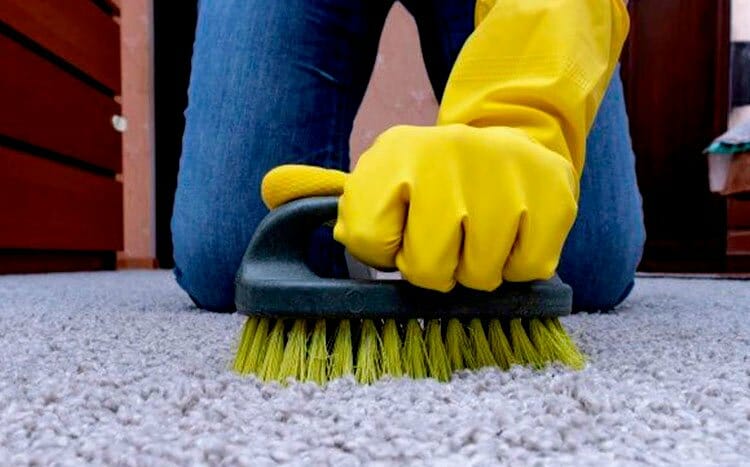
Step 3: Shield and ventilate the space
Shielding the space in which the carpet is located is necessary in order to keep the spores spreading throughout your home. To do so, simply close all the doors leading to the rest of the home. You can also use plastic sheeting to block any spaces through which the spores may escape to the rest of the house.
Make sure the space is well ventilated so that any airborne spores can escape to the outside. leaving your windows open is advisable. You can also use a fan to increase airflow out of the room.
Step 4: Scraping the mold and mildew
In addition to affected areas giving off a musty smell, they also tend to have distinct discoloration. These areas tend to be either black, white, or green. And if you notice these patches on your carpet, it means that there is excess mold and mildew that needs to be scraped off.
Use the brush to scrape off the mold and mildew patches, and then collect them on a dustpan. Thereafter, dispose of them by dumping them in a trash bag and then sealing it.

Step 5: Applying baking soda
Baking soda is great at getting rid of bad odors. It is also effective at killing mold and mildew. Therefore, applying a baking soda solution to the affected area is an effective way of completely clearing the area.
First, mix one-part baking soda and two parts water in a bowl to create the solution. After you are done, simply apply it to the area and then let it do its magic for a while — leaving it overnight is recommended. And if there is any excess solution, simply remove it by blotting the area with a dry rag.

Step 6: Vacuuming
After giving the vinegar time to kill off any remaining biological growths, you should then vacuum the area with a vacuum that is fitted with a HEPA filter. This step is important to get rid of any unwanted remnants of mold and mildew particles.
Using a vacuum with a HEPA filter is also advisable because, with any other filter, the mold and mildew particles can escape and end up spreading throughout the home.
Step 7: Scrubbing with the vinegar solution
Vinegar is great at neutralizing bad smells, and so using it at this stage will help to ensure that your carpet is odor-free. Simply dilute the vinegar with water and then use the resulting solution to scrub the area. Thereafter, give the carpet time to dry.
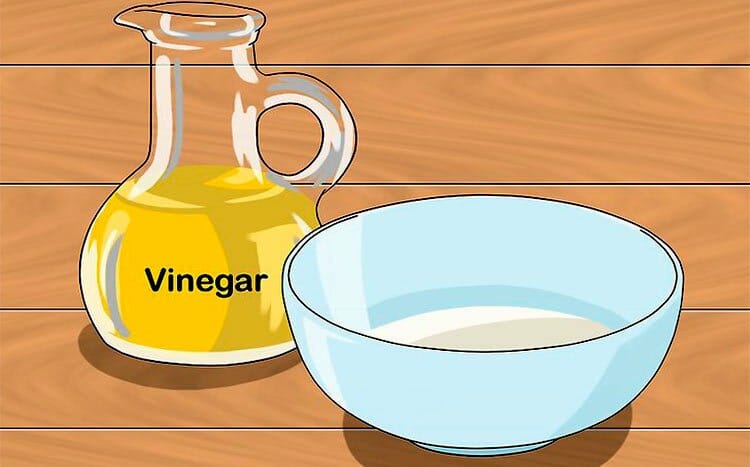
Step 8: Improve the drying conditions
While you can simply let the carpet dry on its own, it is always advisable that you take steps to accelerate the drying out process. This is because the more time the carpet stays mist, the higher the chances of mold and mildew growing back again.
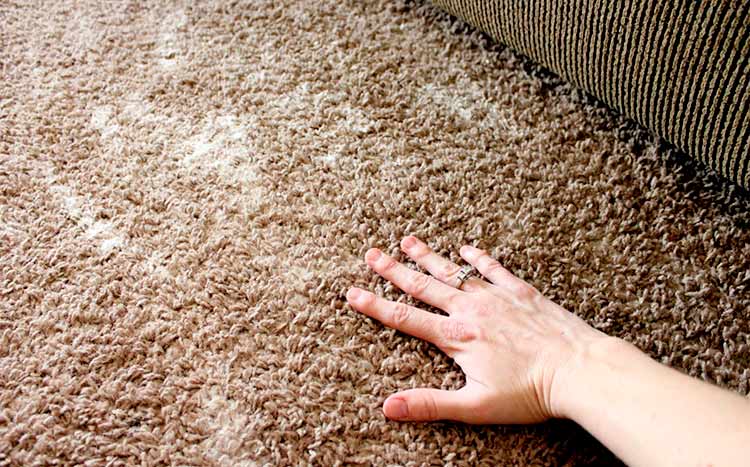
Direct sunlight
If you can take the carpet outside, then doing so is the best option. Letting the carpet dry under direct sun for 48 hours will facilitate a faster drying process because of the heat. Sunlight is also an effective disinfectant and it will thus help to ensure that your carpet is absolutely free of any biological growths.
Improving airflow
if taking the carpet outside is not an option, either because it is bulky and heavy or because of the weather, then improving airflow in your home is the next best thing. Better airflow expedites the drying process simply because it accelerates the rate at which moisture evaporates.
Start by opening your windows and doors. Running the A/C will also help. And if you have a couple of fans at your disposal, then positioning them in the room where the carpet is located and running them is advisable.
Step 9: Be proactive to prevent regrowth
Getting rid of mold and mildew does not stop cleaning the affected area. The process extends to taking preventative measures that are geared towards preventing regrowth. These measures include;
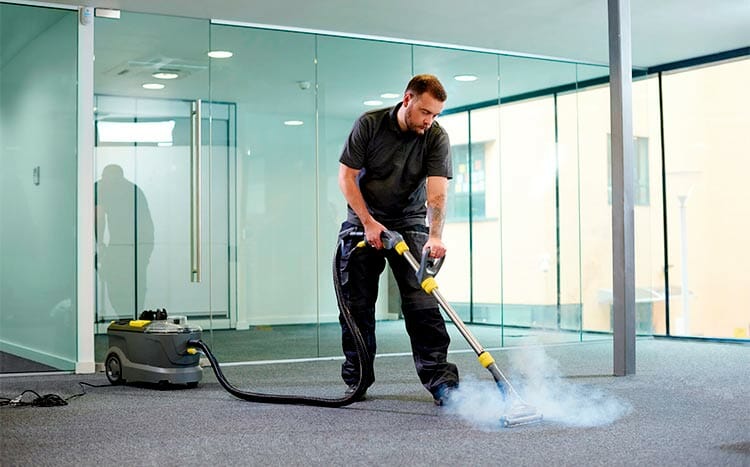
Replacing air filters
Great quality air filters are great at preventing mold and mildew growth because they trap them. If mold spores exist in your home, they can get filtered out of circulation when the air passes through your air conditioning system’s air filters.
These filters will also keep spores from invading your home by trapping them before they have a chance to get to your carpet. Both of these things will reduce incidences of mold and mildew attacks.
Poor quality filters or worn-out filters are not good at protecting your home from such invasions. Therefore, replacing your worn-out filters with new ones, or simply upgrading from your existing filters can go a long way towards helping you keep mold from growing on your carpet.
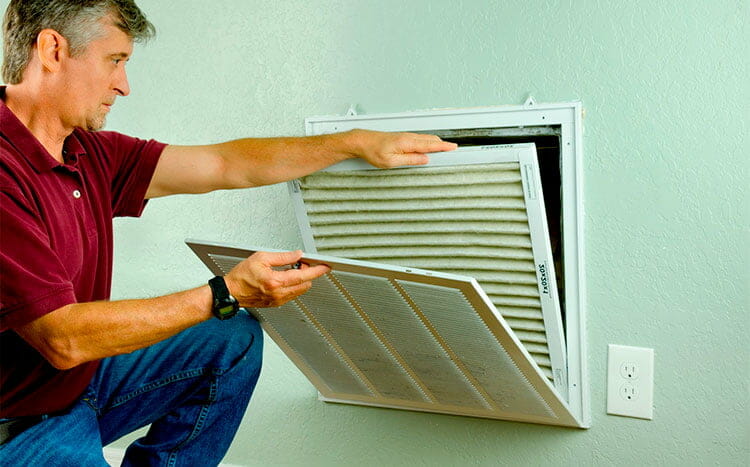
Increasing vacuuming frequency
Vacuuming helps get rid of dust, dirt, and debris from your carpet. In doing so, it rids your carpet off a base on which the mold and mildew could have thrived. Opting for cleaning methods like steam cleaning can also kill any existing spores, and will thus help to protect your carpet from the damaging effects of mold and mildew growth.
Regulating your home’s humidity
If you live in a highly humid area, or if your house does not have sufficient ventilation, then investing in a humidifier is something that you should consider. This is because a humidifier will get rid of excess moisture from your home’s internal environment. Since mold and mildew tend to prefer damp environments, this will help to discourage them from growing on your carpet.
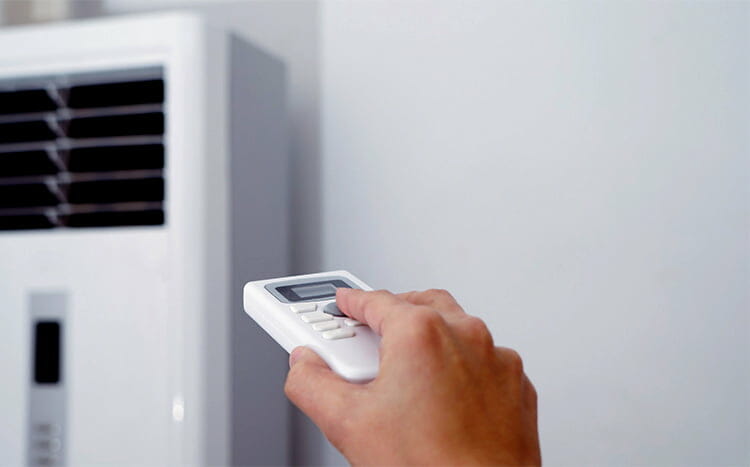
Fix the underlying cause of mold and mildew
Roof leaks, leaks from a plumbing system, food spills, and flooding are common causes of mold and mildew problems. Therefore, sealing roof leaks, replacing burst pipes, and repairing leaking plumbing pipe joints will go a long way towards reducing incidences of regrowth.
As for food spills, you can reduce them by restricting the use of the affected area. And if the room is prone to flooding, accidental spills, or has high humidity, then removing the carpet is an option that you should explore. Installing a carpet that comes with moisture-resistant padding may also work.
It is important to note that there are other alternatives to vinegar and baking soda. You can use specialized mold and mildew cleaning solutions that are sold in the store. Some people also use bleach to eradicate mold. Whichever the case, it is always advisable that you never mix any of the recommended chemicals as mixing them can sometimes produce toxic chemicals.
Given the fact immense effect that mold and mildew growth can trigger severe allergic reactions like skin irritation, runny nose, and eye irritation; and given that it can cause permanent discoloration of your carpet, detecting it as early as possible is always key to minimizing the magnitude of the damage that it can inflict.













